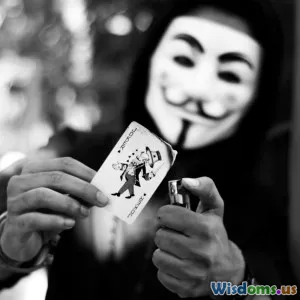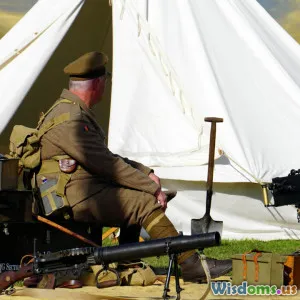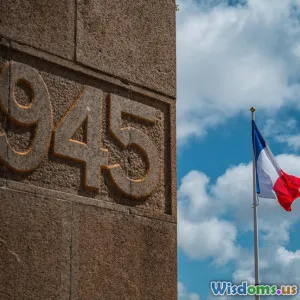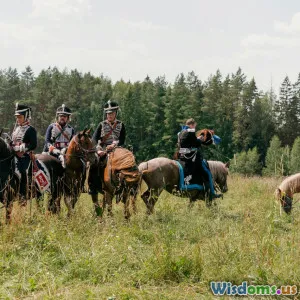
Exploring the Secretive Brotherhoods
7 min read Dive into the enigmatic world of secretive brotherhoods and uncover their myths, influences, and the truths behind their hidden legacy. (0 Reviews)
Exploring the Secretive Brotherhoods: Unveiling Hidden Worlds
Secretive brotherhoods have fascinated humankind for centuries. From whispered legends cloaked in shadow to documented historical societies, these groups have captured curiosity, intrigue, and even fear. But who are these elusive brotherhoods? What binds their members, and what roles have they played throughout history? In this article, we'll explore the rich landscape of secretive brotherhoods, revealing their origins, customs, and enduring influence.
Origins: When and Why Brotherhoods Formed
Brotherhoods trace back to ancient social and spiritual needs. From early religious cults to guilds of craftsmen, these exclusive groups provided camaraderie, mutual protection, and shared purpose.
-
The Mysteries of Ancient Brotherhoods: The ancient world was home to secret societies like the Eleusinian Mysteries of Greece, where initiates participated in ceremonies that promised mystical knowledge and afterlife assurances. Such rites were highly guarded, symbolizing the importance of secrecy in spiritual ascents.
-
Medieval Guilds: Originating in Europe, guilds such as the Masons organized skilled craftsmen, ensuring quality and defending trade secrets. Over time, their rituals and meeting customs gave rise to the modern Freemasons.
These early brotherhoods often combined spiritual enlightenment, socio-political power, and economic interests, using secrecy as a tool for cohesion and advantage.
Famous Secretive Brotherhoods Through History
The Freemasons
Arguably the most well-known secret society, Freemasonry evolved from medieval stonemason guilds. Established formally in the early 18th century, Freemasonry spread worldwide and attracted prominent figures—from George Washington to Mozart.
-
Rituals and Symbols: They utilize Masonic symbols such as the compass and square, representing morality and virtue. Their initiatory rituals are steeped in allegory, focusing on enlightenment and brotherly love.
-
Social Impact: Freemasonry has influenced political and cultural spheres, often promoting Enlightenment ideals like liberty and equality.
The Illuminati
Originating in 1776 Bavaria, the Illuminati was founded by Adam Weishaupt as a secret society aimed at promoting secularism and opposing religious oppression.
-
Conspiracy Theories: Widely rumored to manipulate global events, the group's actual historical activity was short-lived before suppression by authorities.
-
Modern Influence: Despite disbanding, the Illuminati legend persists in popular culture, symbolizing hidden control and elite conspiracies.
The Skull and Bones
An American college society formed in 1832 at Yale University, this brotherhood is famous for its exclusivity and powerful alumni.
-
Influential Members: Many members have ascended to high political and business offices, including presidents like George H.W. Bush.
-
Secrecy: Their rituals and inner workings remain veiled in mystery, contributing to widespread speculation.
Understanding Brotherhood Rituals and Symbols
Secrecy intensifies brotherhoods’ allure. Rituals serve to create a shared identity and reinforce group values.
-
Initiation Ceremonies: Typically involving symbolic acts, these rituals often represent a journey from ignorance to knowledge.
-
Symbolism: Objects or gestures such as secret handshakes or coded language signify membership and link the past to present.
-
Purpose: Beyond dramatics, ceremonies build trust and loyalty, essential for groups bound by confidentiality.
The Sociopolitical Influence of Secretive Brotherhoods
While conspiracy theories often exaggerate their power, many brotherhoods have influenced governance, philosophy, and social change.
-
Masonic Leaders in Politics: Freemasons have held offices that shaped democratic revolutions and human rights developments.
-
Advocacy and Reform: Brotherhood networks historically supported philanthropy, education, and abolitionist movements.
-
Economic Cooperation: Secret societies sometimes foster business ties, enhancing economic opportunities for members.
The Contemporary Relevance and Criticism
Secretive brotherhoods face skepticism about transparency and elitism.
-
Modern Membership: Today, many societies operate openly or reduce secrecy in favor of public service.
-
Criticism: Some accuse these groups of perpetuating inequality or undemocratic influences.
-
Pop Culture Impact: Books, movies, and documentaries perpetuate intrigue, but also help demystify true functions.
Conclusion: Why Secretive Brotherhoods Still Matter
The allure of secretive brotherhoods lies in the balance between mystery and tangible impact. These organizations embody human quests for belonging, knowledge, and influence.
By exploring their histories and myths, we not only satisfy curiosity but also gain insights into social dynamics and cultural movements.
Understanding secretive brotherhoods fosters critical thinking about power, transparency, and identity in contemporary society. As history reveals, beneath many whispers is a legacy of connection, philanthropy, and sometimes, controversy.
Further Reading & References
- Hamill, J., & Gilbert, R. A. (2011). Freemasonry: A Journey Through Ritual and Symbol. Weiser Books.
- Knutsen, K. (2009). Secret Societies and the French Revolution. History Today.
- Urban, H. B. (Ed.). (2015). Fraud, Fictions, and the Freemasons: A History of The Occult. Palgrave Macmillan.
Quote:
“The strength of secret societies lies not in their conspiracies, but in their ability to form tightly knit communities bound by shared values and symbolism.” — Historian Robert L. D. Cooper
Secretive brotherhoods remain captivating portals into human social behavior, legacy, and myth. Whether skeptics or enthusiasts, exploring them expands our awareness of how hidden networks shape the world.
Rate the Post
User Reviews
Popular Posts




















